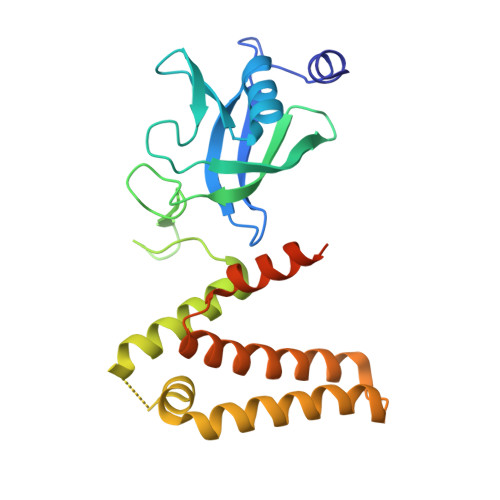Structural and mechanistic insights into the bifunctional HISN2 enzyme catalyzing the second and third steps of histidine biosynthesis in plants.
Witek, W., Sliwiak, J., Ruszkowski, M.(2021) Sci Rep 11: 9647-9647
- PubMed: 33958623
- DOI: https://doi.org/10.1038/s41598-021-88920-2
- Primary Citation of Related Structures:
7BGM, 7BGN - PubMed Abstract:
The second and third steps of the histidine biosynthetic pathway (HBP) in plants are catalyzed by a bifunctional enzyme-HISN2. The enzyme consists of two distinct domains, active respectively as a phosphoribosyl-AMP cyclohydrolase (PRA-CH) and phosphoribosyl-ATP pyrophosphatase (PRA-PH). The domains are analogous to single-domain enzymes encoded by bacterial hisI and hisE genes, respectively. The calculated sequence similarity networks between HISN2 analogs from prokaryotes and eukaryotes suggest that the plant enzymes are closest relatives of those in the class of Deltaproteobacteria. In this work, we obtained crystal structures of HISN2 enzyme from Medicago truncatula (MtHISN2) and described its architecture and interactions with AMP. The AMP molecule bound to the PRA-PH domain shows positioning of the N1-phosphoribosyl relevant to catalysis. AMP bound to the PRA-CH domain mimics a part of the substrate, giving insights into the reaction mechanism. The latter interaction also arises as a possible second-tier regulatory mechanism of the HBP flux, as indicated by inhibition assays and isothermal titration calorimetry.
Organizational Affiliation:
Center for Biocrystallographic Research, Institute of Bioorganic Chemistry, Polish Academy of Sciences, Noskowskiego 12/14, 61-704, Poznan, Poland.


















